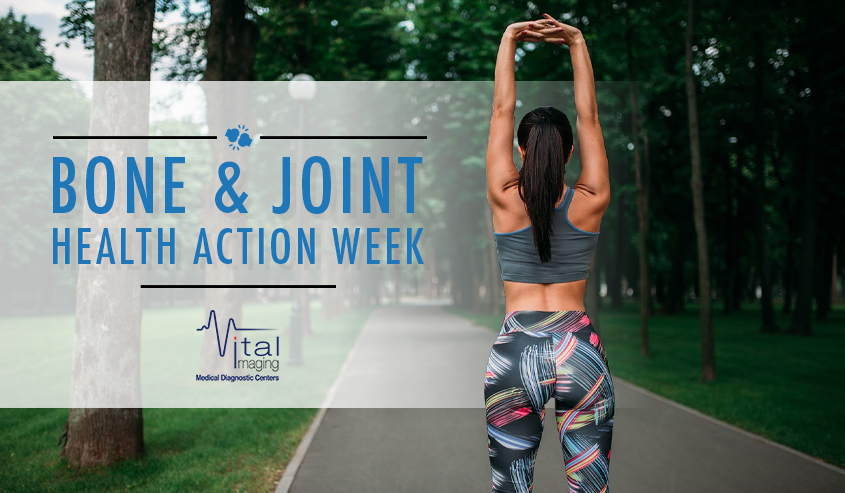
Held annually on October 12th to 20th, the Bone and Joint Action Week focuses on bone related disorders like pediatric conditions, back pain, spinal deformity, arthritis, trauma, osteoporosis. All related activities have been designed to create more awareness about these diseases. Affecting a large segment of the population, statistics show:
- As per the Burden of Musculoskeletal Conditions in the U.S., 54% of the adult population over the age of 18 years are affected by bone and joint ailments.
- 33% of people over the age of 18 years needed medical care for musculoskeletal diseases in the past decade.
- Millions of people are affected due to the chronic and long-term physical disabilities and pain.
The Bone and Joint Action week includes:
- October 12 – World Arthritis Day
- October 16 – World Spine Day
- October 17 – World Trauma Day
- October 19 – World Paediatric Bone and Joint (PB&J) Day
- October 20 – World Osteoporosis Day
Considering the above statistics, it’s true that you will live longer and be more productive, if you have healthy bones and joints. In the past, people that suffered from bone and joint disorders, lived painful and short lives. However, you have to know how to maintain healthy bones and joints.
Keeping Your Bones Healthy
Keeping your bones healthy is relatively simple but it does entail a few lifestyle changes. These include eating healthy and maintaining a well balanced diet. You want to eat food and drink liquids that are high in calcium and Vitamin D. Calcium naturally builds your bones up while keeping them strong and healthy. Vitamin D helps your body absorb calcium better. Regular exercise will stimulate your body to produce hormones and natural chemicals to keep your bones healthy. You can also take bone density tests. These tests will examine the health of your bones. Your doctor can then prescribe a treatment plan to keep them healthy.
How Bone Disorders Are Diagnosed?
Well, your doctor can start off by ordering blood and urine tests. These will show the physician the levels of calcium that are present in your bones. They can take x-rays of your bones. Doctors can also do an MRI of your bones. The images are 3-D and will give them an accurate picture of the true nature of your bones. Additionally, digital X-ray radiogrammetry is another test that calculates the bone mineral density and is based on the radiogrammetry techniques. Digital imaging techniques have advanced over the years and have an important role in diagnosing the illness accurately.
How to Treat it?
If you are an elderly woman or man, your doctor will prescribe hormone pills. A good one is an estrogen pill. You may even be asked to take a progesterone pill. You will be asked to exercise regularly because this can reverse bone thinning.
You don’t have to live with thinning bones. You can indeed have good bones even at age 70. All you have to do is follow a good bone density management plan that your doctor prescribes you. Contact Vital Imaging today to schedule an appointment.
